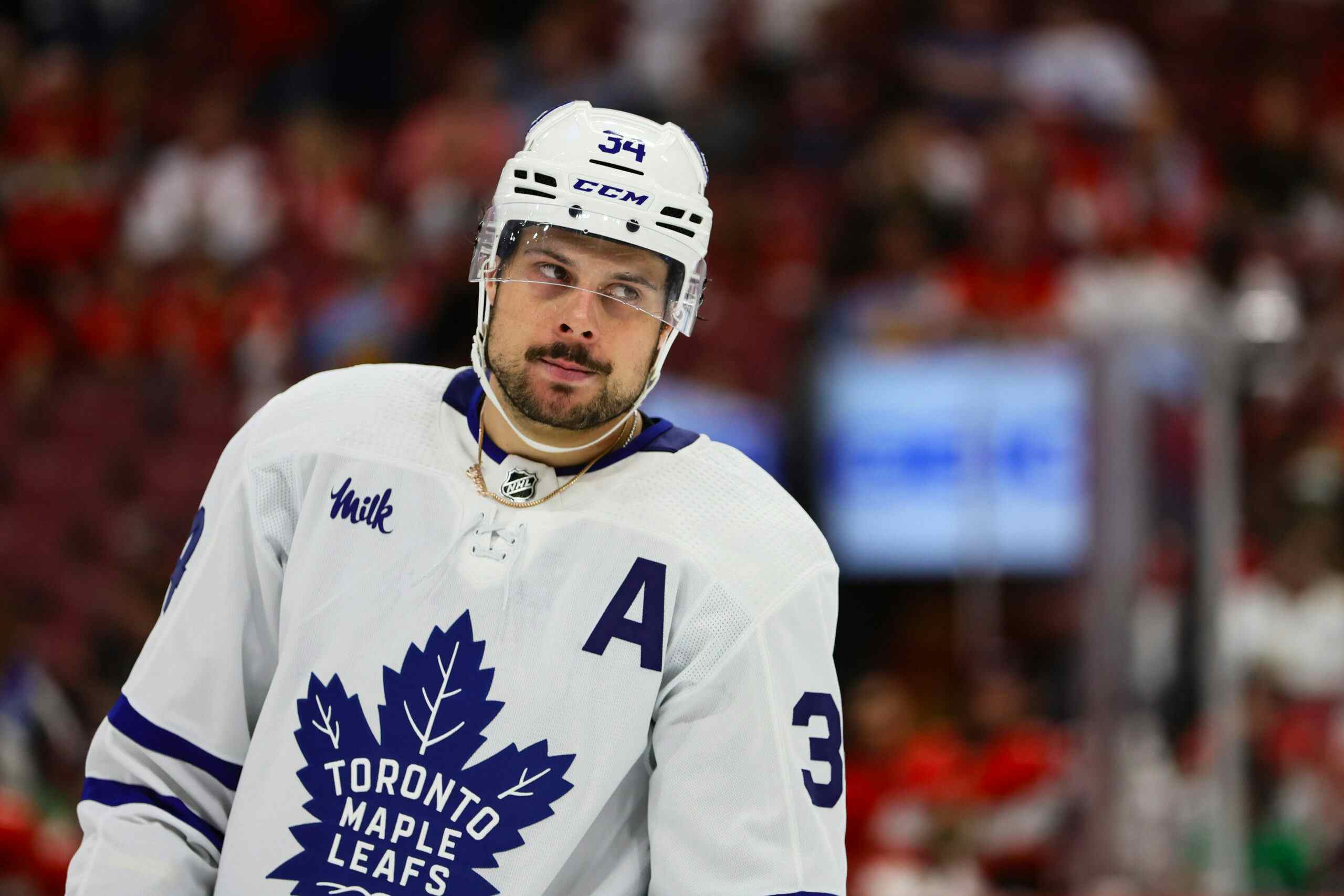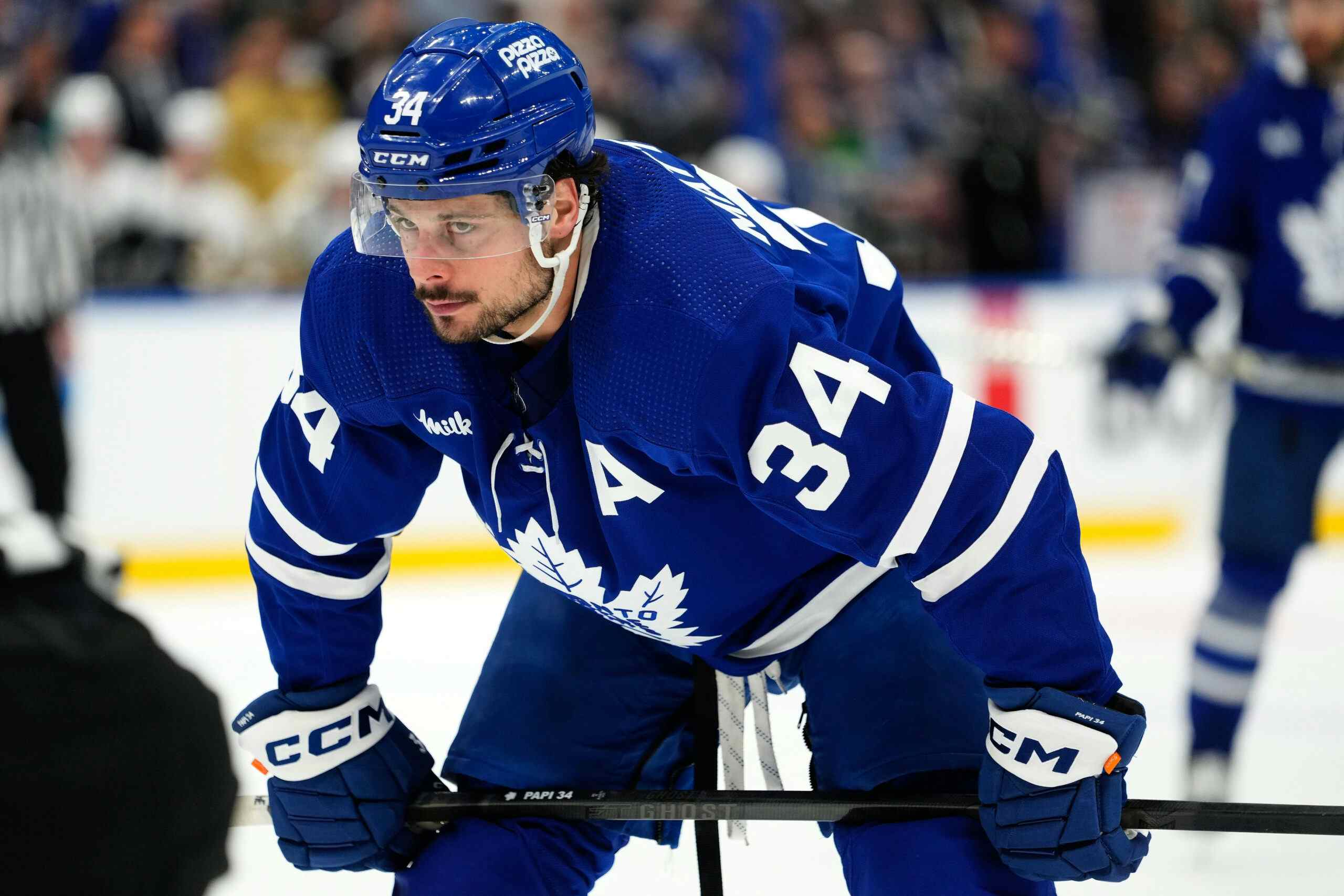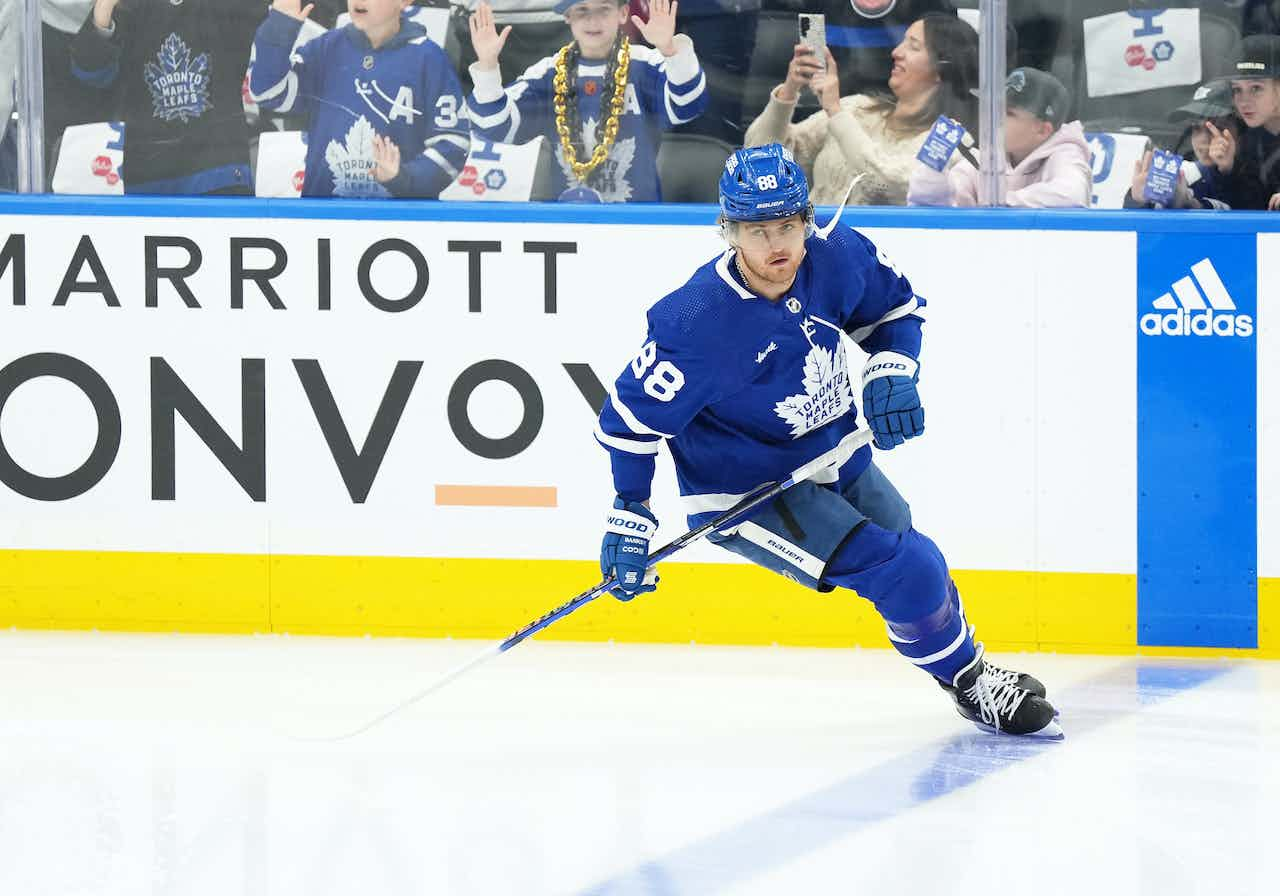Gunnarsigned: Three More Years

The Leafs fan populace needed something new to talk about, and fast, as cycle three or four of "let’s tear apart the July 5th transactions" was set to begin. Who would’ve thought that the new topic at hand would involve good news? Today, the Toronto Maple Leafs and Carl Gunnarsson came to terms on a three year extension, set to pay an average of 3.15 million per year to the Swedish defender.
I’m of the belief this is a rather good deal.
To The Dollar
One of the best ways to define value, naturally, is to find similar deals. So I went on a search across the league, finding players who fit the following criteria:
- Were between 24-28 at the start of their contract year (Gunnarsson would’ve been 25, but due to the lockout, started at 26). This keeps development curves similar, and eliminates bridge contracts.
- Were resaonably close to the equivalent of 3.15 million for their year, 4.9% of the Salary Cap Celing (2.783M in 09/10, 2.910M in 10/11, 3.15M in 11/12 and this year, 3.439M in 2012/13)
I found the following players:
| Player | Contract Year | Age | Contract |
|---|---|---|---|
| Carl Gunnarsson | 2012/13 | 25 | 3.15 x 3 |
| Marc Methot | 2010/11 | 25 | 3.0 x 4 |
| Andy Greene | 2010/11 | 28 | 3.0 x 4 |
| Roman Polak | 2010/11 | 25 | 2.75 x 5 |
| Rostislav Klesla | 2009/10 | 27 | 2.975 x 4 |
| Karl Alzner | 2012/13 | 24 | 2.8 x 4 |
| Andrej Sekera | 2010/11 | 24 | 2.75 x 4 |
| Kevin Klein | 2012/13 | 28 | 2.9 x 5 |
| Trevor Daley | 2010/11 | 27 | 3.3 x 5 |
| Matt Greene | 2008/09 | 25 | 2.95 x 5 |
| Jonathan Ericsson | 2010/11 | 26 | 3.25 x 3 |
| Dennis Seidenberg | 2009/10 | 28 | 3.25 x 4 |
We don’t know what statistcal metrics every single NHL team uses when negotiating with a player. Combine that with the fact that Gunnarsson’s deal was made as a way to beat arbitration, and rather than using any "advanced" numbers to compare the players, I’ve stuck to standard fare: production, ice time, and the ever-so-dreaded real time statistics.
| Player | GP | G | A | PTS | +/- | PIM | S | S% | TOI | ATOI |
|---|---|---|---|---|---|---|---|---|---|---|
| Carl Gunnarsson | 37 | 1 | 14 | 15 | 5 | 10 | 28 | 3.6 | 787 | 21:17 |
| Marc Methot | 74 | 0 | 15 | 15 | 2 | 58 | 58 | 0 | 1472 | 19:31 |
| Andy Greene | 82 | 4 | 19 | 23 | -23 | 22 | 91 | 4.4 | 1834 | 22:22 |
| Roman Polak | 55 | 3 | 9 | 12 | -4 | 33 | 54 | 5.6 | 1098 | 19:57 |
| Rostislav Klesla | 26 | 2 | 6 | 8 | -7 | 26 | 24 | 8.3 | 523 | 20:07 |
| Karl Alzner | 48 | 1 | 4 | 5 | -6 | 14 | 39 | 2.6 | 1006 | 20:57 |
| Andrej Sekera | 76 | 3 | 26 | 29 | 11 | 34 | 88 | 3.4 | 1603 | 21:06 |
| Kevin Klein | 47 | 3 | 11 | 14 | -1 | 9 | 54 | 5.6 | 960 | 20:25 |
| Trevor Daley | 82 | 8 | 19 | 27 | 7 | 34 | 131 | 6.1 | 1844 | 22:29 |
| Matt Greene | 82 | 2 | 12 | 14 | 1 | 111 | 28 | 7.1 | 1619 | 19:44 |
| Jonathan Ericsson | 74 | 3 | 12 | 15 | 8 | 87 | 89 | 3.4 | 1179 | 17:05 |
| Dennis Seidenberg | 79 | 4 | 28 | 32 | 6 | 39 | 153 | 2.6 | 1811 | 22:55 |
These guys all got very similar ice time in their contract years. Ericsson (17:05) aside, everybody played between 19:30 and 23 minutes per game, with Gunnarsson being fourth at 21:17. So, in fairness to shortened seasons, be it by lockout and injury, we’re going to use my dreaded minute adjustment. Giving everybody 82 games at 22 minutes a game (1804 minutes), you get…
| Player | GP | G | A | PTS | +/- | PIM | S | S% | TOI | ATOI |
|---|---|---|---|---|---|---|---|---|---|---|
| Carl Gunnarsson | 82 | 2 | 32 | 34 | 11 | 23 | 64 | 3.6 | 1804 | 21:17 |
| Marc Methot | 82 | 0 | 18 | 18 | 2 | 71 | 71 | 0 | 1804 | 19:31 |
| Andy Greene | 82 | 4 | 19 | 23 | -23 | 22 | 90 | 4.4 | 1804 | 22:22 |
| Roman Polak | 82 | 5 | 15 | 20 | -7 | 54 | 89 | 5.6 | 1804 | 19:57 |
| Rostislav Klesla | 82 | 7 | 21 | 28 | -24 | 90 | 83 | 8.3 | 1804 | 20:07 |
| Karl Alzner | 82 | 2 | 7 | 9 | -11 | 25 | 70 | 2.6 | 1804 | 20:57 |
| Andrej Sekera | 82 | 3 | 29 | 32 | 12 | 38 | 99 | 3.4 | 1804 | 21:06 |
| Kevin Klein | 82 | 6 | 21 | 27 | -2 | 17 | 101 | 5.6 | 1804 | 20:25 |
| Trevor Daley | 82 | 8 | 19 | 27 | 6 | 33 | 128 | 6.1 | 1804 | 22:29 |
| Matt Greene | 82 | 2 | 13 | 15 | 1 | 124 | 31 | 7.1 | 1804 | 19:44 |
| Jonathan Ericsson | 82 | 5 | 18 | 23 | 12 | 133 | 136 | 3.4 | 1804 | 17:05 |
| Dennis Seidenberg | 82 | 4 | 28 | 32 | 6 | 39 | 152 | 2.6 | 1804 | 22:55 |
Guess what? Suddenly Gunnarsson is arguably the most efficient point producer of his contract class. It’s not by a significant margin – the top half is only separated by seven points, but that’s still pretty great for somebody signed for his defensive abilites. He also doesn’t shoot enough, but considering the entire team appears to be allergic to shooting and he plays a lot of his time along side Dion Phaneuf, I can’t say I blame him specifically. Also, if he’s only scoring 3.6% of the time, maybe it’s for the best.
His +/- looks good here too, which indicates… absolutely nothing other than him playing on a generally good team. I just like making that point a lot, and wanted to scare people who understand that into thinking I was going to use it. The only stat left to take from this are his penalty minutes, which could imply a less physical style of play than the others. Or maybe he’s just smarter at throwing the body? On to the dreaded RTS:
| Player | GP | Hits | BS | GV | TK | TOI |
|---|---|---|---|---|---|---|
| Carl Gunnarsson | 82 | 179 | 163 | 73 | 25 | 1804 |
| Marc Methot | 82 | 216 | 120 | 33 | 26 | 1804 |
| Andy Greene | 82 | 48 | 154 | 33 | 33 | 1804 |
| Roman Polak | 82 | 181 | 128 | 20 | 18 | 1804 |
| Rostislav Klesla | 82 | 135 | 169 | 24 | 17 | 1804 |
| Karl Alzner | 82 | 81 | 152 | 41 | 18 | 1804 |
| Andrej Sekera | 82 | 69 | 96 | 57 | 43 | 1804 |
| Kevin Klein | 82 | 124 | 167 | 60 | 43 | 1804 |
| Trevor Daley | 82 | 31 | 121 | 41 | 33 | 1804 |
| Matt Greene | 82 | 225 | 186 | 67 | 12 | 1804 |
| Jonathan Ericsson | 82 | 164 | 57 | 86 | 24 | 1804 |
| Dennis Seidenberg | 82 | 165 | 215 | 25 | 24 | 1804 |
While hits are a subjective, non-standarized statistic that changes from arena to arena, you can see that even with margin of error, Gunnarsson is one of the most frequent hitters in this group. He’s also very prone to sacrifce the body to block a shot. Those giveaway numbers could potentially be damning, but it’s also evident that he has more total interactions with the puck than most of these players. Besides, most good defenceman will giveaway the puck more frequently than they’ll straight up take it away. It’s the nature of the game, and why giveaways are such a flawed stat, often filled with top-tier defenders near the heights of the leaderboard.
Adjusted tables both aside and considered, Gunnarsson simply performed better in the sense of straightforward, negotiation-friendly statistics than most of his peers in his contract year. Even now, I feel that Alzner and Seidenberg are the only who I could definitevely say would be more valuable on the Leafs. With that said, Alzer was both a steal for Washington and a bit of an unproductive palyer, and Seidenberg is due for a big raise next July.
Beyond His Price Range
Let’s shift over a bit.
- Gunnarsson finished second amongst Leafs defencemen (24th in the NHL) in points per 60 minutes, despite attempting the fewest shots.
- An impressive ten of his fourteen assists come 5 on 5, but just two of those were primary assists. There’s no particular primary assist recipient or goal scorer, so it’s safe to say that rather then a set play this is a result of Gunnarsson having an ability to find people who have more set-up options than himself.
- Gunnarsson was second amongst Leafs defencemen in Quality of Competition, but that’s not shocking when Dion Phaneuf is ranked first in the league. Gunnarsson, on the other hand, ranks fourth amongst consistantly playing NHLers. He’s not far from the bottom of lowest Quality of Teammates either (in other news, Dion Phaneuf for Hart).
- While you’re on that rankings list, it’s wort nothing that Gunnarsson is the only defenceman in that top 30 with under 40% offensive zone starts. This would be because at 39.8%, he has the fewest of all regular defencemen. Amazing that he was producing points with that considered, and even moreso that he finished 45% of his shifts on the other end; very few players were able to replicate that spike.
- There are some negatives, though. Gunnarsson finished eighth in individual PDO, 7th last in Corsi On (with a negative Corsi Rel, abliet slight at -0.5) , and benefited from the 8th highest team shooting percentage whlie he was on the ice (panic inducing: also includes Leafs at 1, 2, 18)
Getting Subjective / Conclusion
The stats say Gunnarsson is more than pretty good compared to similarly signed players in his contract years. The fancy stats say he produces efficiently, is set up for failure, but still does alright, even if possibly by luck. But even if we don’t let the numbers speak for themselves, how should one feel about this deal?
The reality is, the Leafs don’t have many guys that are capable of being dependable players under high minutes, all while meshing with Dion Phaneuf. Gunnarsson, for all intents and purposes, is the only guy that has those additional defensive qualties to make it work. It’s kind of like Tyler Bozak and Phil Kessel, except that Gunnarsson is actually able to complement his partner and recieved a salary that’s reflective of his individual ability instead of the role he’s been forced into by default.
In the event that the Leafs ever do get a second top pairing defenceman, Gunnarsson is still very suited to play on a second pair. If anything, he’s a better fit as a number three than as a number two. This doesn’t make his contract a concern, either; 3.15M is more than solid for somebody in that role, with many teams paying more for their second or even third playing defenders (look at Philadelphia, or… let’s face it, John-Michael Liles).
The final factor here is the term. It’s rare that you’re able to pick up a player with the all around numbers like this, at this price, without commiting for a significant chunk of time. Three years is bigger than a "bridge" at the age of 26, buys UFA years, but also isn’t a significant risk to the team. He may prove worthy of a raise, but it’s doubtful at this point in his development curve that he’ll be significantly better by the end of it. If he regresses? It’s an easy contract to suck up for a short period of time, and with cap inflation, could even stay decent if he doesn’t.
The rest of the offseason will be interesting, with little cap space left for Franson, Kadri, and Fraser to sign their new deals. But one thing is for sure – the Leafs made a shrewd move here, undoubtably their best major
Recent articles from Jeff Veillette





